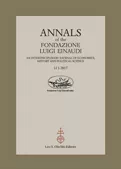The objective of this article is to illustrate the tension between mobility and immobility that existed in the slave labour market in the Mediterranean during the 18th and 19th centuries, focusing mainly on the Italian case, but it also considers the issue in a wider European sense. The skin colour, age, physical appearance, and ethnic origin (as described by the sources) of captives, enslaved people and formerly enslaved people affected their mobility before and after the legal abolition of slavery between 1752 and 1885. I will analyse the correlation between the legal end of slavery and the im/mobility of enslaved and ex-enslaved based on the characteristics and qualities assigned to them. The juridical abolitions of slavery in the 19th century did not change this correlation in geographical spaces characterised by accelerating mobility of persons of colour with different juridical statuses. My case studies are based in Florence, Venice, Livorno, Rome and Civitavecchia



